“Natural wine” is a popular buzzword, but what does it actually mean? We dig behind the scenes to bring clarity to this often polarizing topic.
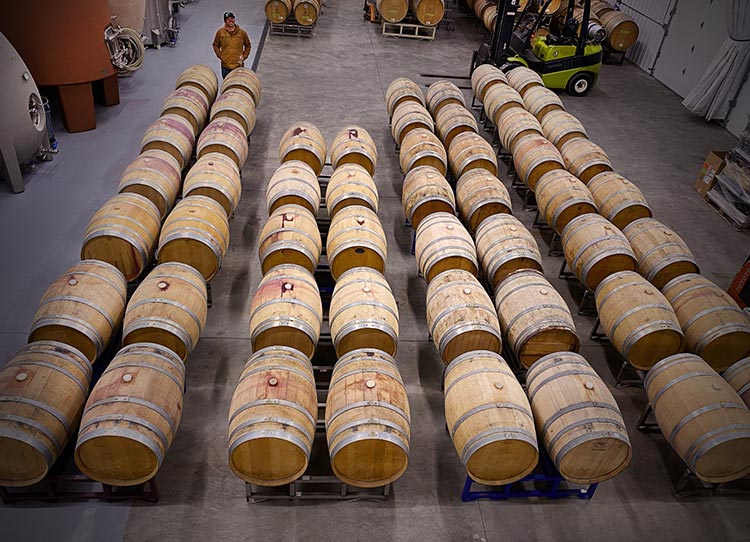
Written by Regina Daigneault
WHEN I think about natural wine, the “new” popular term in winemaking that seems to be on everyone’s lips, it brings to mind a wine tour I had organized to Alsace, France years ago. Stupidly, I asked the winemaker at a renowned winery in the heart of the region, how he determines how much sweetness to leave behind in the wines. He looked at me with a funny quizzical expression and said simply, “I don’t decide, the wine does!” Sheesh, did I feel dopey, well of course the wine decides when it’s done fermenting, that’s only natural. That makes sense, right? In certain years the yeast in the juice will continue its steady consumption of sugar (converting it to alcohol) and in other years the chill in the air arrives earlier and that’s when everything slows to a crawl and the yeast eventually stops working.
Every winemaker has choices throughout the production of turning grape juice into wine. If they choose to control the temperature, feed the yeast to help the population stay healthy and active, or maybe decide to stop fermentation to leave some sweetness in the wine, is this process still “natural?” How much interference is too much?
The beauty of Washington State wines is the amount of diversity in varieties, styles, production methods employed, and when to harvest the fruit also plays a role in controlling the product.
Low Intervention
This term is commonly used among winemakers who hope to just “let things happen naturally.” I spend a lot of time around winemakers and know many are moving in that direction, or have always had the philosophy of allowing the wine to do its thing.

My colleague and wine educator Kathryn House McClaskey has a Masters in Viticulture and Enology. Prior to founding House of Wine, a teaching and consultancy center in Idaho, she helped make wine for Seven Hills Vineyard, Pepper Bridge Winery, and at Betz Family Winery where she was assistant winemaker from 2006 to 2010.
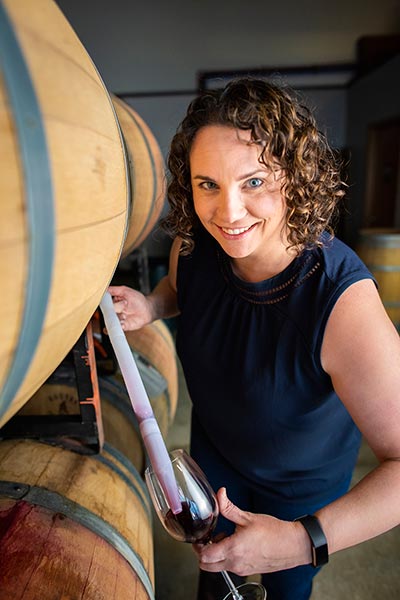
“I describe crafting natural wines akin to taming wild horses. If done well, the resulting wines (or horses) are extraordinary. Done poorly and you risk wasting your time and money on an unwelcome outcome,” says McClaskey.
McClaskey elaborates further on the potential ups and downs: “The best natural wines combine amazing complexity, freshness and a lively nature. And, some of the best wines of the world could be considered low intervention or natural. However, I’ve tasted several natural wines that were flawed and others that were faulted to the point of being undrinkable. At its core, our job as winemakers is to create wines that people love to drink and to do so thoughtfully and with intention, regardless of the wine production style.”
Subjective Choices
There is no official definition for natural wine. As such it can be subjective, based on the individual and their preferences. Jeff Lindsay-Thorsen, winemaker and owner of W.T. Vintners in Woodinville, believes the movement is justified, with limitations. “Wine is not a natural product; without the human element it won’t ever become wine. However, the more recent approach to winemaking has stripped away the magic,” he says. “Most wine has become an industrial product full of additives and heavy-handed manipulation. It doesn’t have to be this way, with sanitation and a low amount of sulfur dioxide (SO2) wine can transmit place, the variety, and be delicious.”
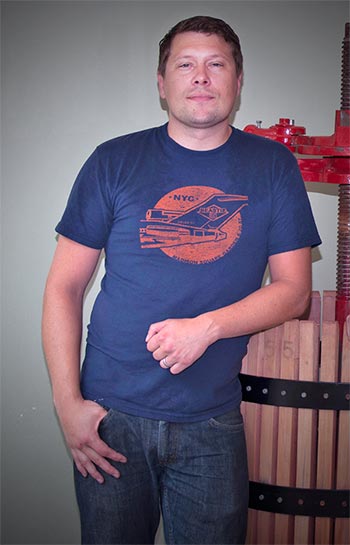
Lindsay-Thorsen agrees with McClaskey that at its extreme, natural winemaking dogma has allowed once unacceptable flaws to become the norm. “Natural wine intends to make something that is a pure expression of the grape and place, but all too often they taste more like failed experiments riddled with bacterial flaws,” he says. “The new, younger generation of wine drinkers that embrace the natural wine club has grown up drinking kombucha and eating pickled-everything in restaurants. This has desensitized many of their palates to unacceptable flaws often found in wines deemed natural wine. These are not the flavors of fermented grapes, these are bacterial problems caused by dogma, ignorance, or neglect in the cellar.”
However, Lindsay-Thorsen says he believes that what the natural wine movement has gotten right is the idea of the importance of organic farming, low-impact, and low-intervention winemaking.
Terroir Driven
We are finding more experimental winemaking happening in our state. The industry here in Washington State is broadening along with our brothers and sisters in Oregon. We recognize similar trends happening there and many of the growers and producers of wine grapes are trending towards natural methods of farming, a more biodynamic approach or at the very least organic methods that incorporate sustainable farming.
We also see more winemakers in our states purchasing land, planting vines and growing their own grapes; they are establishing farming methods that lean toward natural methods in an effort to build better practices in growing grapes and making wine.
Matt Austin of Grosgrain Vineyards in Walla Walla is another believer in low-intervention winemaking but admits it can be a fine line to achieve the proper balance and character he seeks.

“The many additives that have been created for modern winemaking mainly help to achieve a consistent and predictable result, which can be a great thing, but for me a lot of the magic of wine is in the inconsistencies. There is a reason why most fine wine is vintage dated. It is fascinating to explore the differences between vintages, sites and grape varieties and the more additives that you use in the winemaking process, the more potential you have to obscure those differences,” Austin says.
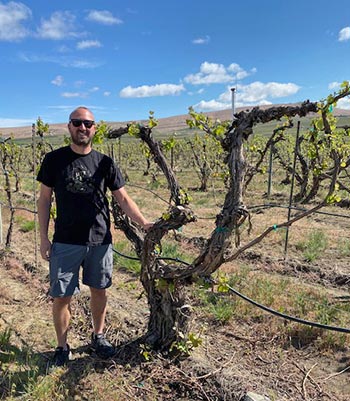
“At the same time, flaws can mask the unique character of a wine as well, so low-intervention winemaking requires a bit of a tightrope walk, and without the protective harness provided by the additives available to most wineries today, so great care must be taken by the winemaker.”
Charlie and Lacey Lybecker, owners of Cairdeas Winery in Manson, are educated at winemaking and careful. They have explored many styles globally and have expanded their palates with wines from all over the world.
“Our wines are minimally processed, and we use natural techniques to achieve desired aromatics, textures and flavors,” says Lacey Lybecker. “For example, we whole cluster ferment our Syrah, we let malolactic conversion happen with native bacteria in lieu of inoculating with a cultured strain, and we use blending as a technique to make adjustments to the wines without having to add products to make those same adjustments.”
From their perspective it’s mostly about keeping out of the way and allowing the wine to do what it does without too much interference.
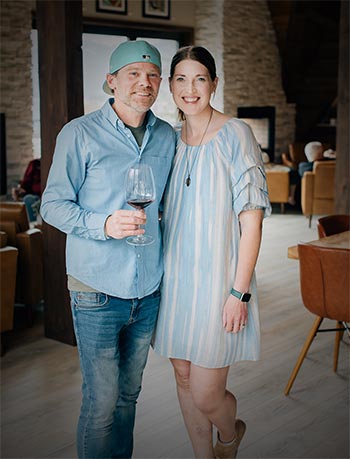
Gut Instinct
Michael Savage, founder of Savage Grace Wines, moved his family and production facility to Underwood Mountain along the Columbia River in Washington. This intimate and alpine-like area has cooler temperatures, grows more white grapes than red varieties due to the cool climate and high elevation, and has a different energy compared to the dry, hot and parched Columbia Valley where the majority of the wine grapes in Washington are grown. Savage’s winemaking style is suited to this climate.
Savage says he built a firm foundation of winemaking and lab analysis before taking most of those tools of modern winemaking off the table and using more of his gut instinct to produce low-intervention wines. “Ideally, the more I understand the chemistry of the wine the less I need to use any chemistry or adjustments in the winemaking. And that leads to more terroir-driven wines. Then I just focus on the important things like the vineyard, how to approach the fermentation, and building a portfolio of wines that I want to focus on.”
“Natural” Buzz
Natural wine and natural winemaking are dependent on the maker and their philosophy in life, their priorities and conclusions regarding the earth, sustainability, organic and utilizing what we are given on this planet.

The soil, weather and climate, the culture of the region are all together what the French term terroir. Preserving that for generations to come are what we agree on as most important. Many years ago I visited an estate in Loire Valley with a group and while we were tasting wine together a bee was buzzing around someone’s head and as he swatted at it the winemaker asked him to please leave her “employee” alone. She considered that bee to be important to her vines, the area and her terroir. This is how I perceive “natural winemaking,” the understanding that involves everything that goes into that bottle of wine.
If one purchases grapes from a vineyard and has no information about how those grapes are farmed, and do not have very much information about the science and sensory skills needed to make wine, it’s difficult to make what is termed natural. Unfortunately, some “winemakers” will give it a shot and call their wine natural—mostly because they don’t know what they are doing and end up with something closer to vinegar. This is not natural, this is a mistake.
Thankfully, the consensus among most winemakers here and abroad is to allow the wine to do what it does naturally but control the amount of oxygen that it is exposed to, and be a sensory expert when it comes to any funky aromas that might arise.
It reminds me of raising children—we have to guide but not interfere too much, gently advise, assist and support but not overwhelm and be the loving advisor and support throughout their lives. If we take this approach in the winery, we won’t be the only ones who think our kids are awesome.
